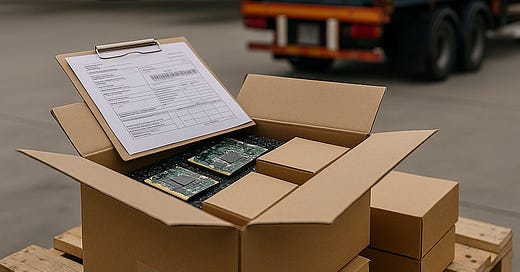Streamlining Hardware Deployments for Global Teams: Logistics Lessons for Tech Firms
Logistics Strategies for Faster Prototyping
In today's hyper-connected world, deploying hardware to globally distributed teams is no longer a luxury—it's a necessity. Whether you're a SaaS startup shipping developer kits to remote engineers or a hardware OEM managing component deliveries to satellite offices, logistics plays a crucial role in business continuity. For Indian tech firms, one recurring challenge is ensuring fast and reliable courier to USA from India, especially when shipping critical devices like laptops, sensors, and development kits to US-based team members or clients.
This post dives deep into the technical and logistical considerations behind efficient international hardware shipments, offering real-world insights for CTOs, operations heads, and IT asset managers.
Global Tech Operations Depend on Seamless Hardware Logistics
Remote work and distributed development teams are no longer trends—they're foundational to modern tech business models. However, companies quickly realize that managing physical IT assets across borders is a complex undertaking. It’s not just about putting a device in a box and shipping it; it's about minimizing downtime, ensuring security, managing customs compliance, and maintaining asset traceability.
If your team regularly ships mission-critical hardware to the US, whether it’s for onboarding new employees or supporting on-site client installations, optimizing your logistics workflow is vital. Choosing a dependable courier to USA from India is just one piece of the larger logistics puzzle.
1. Build a Hardware Deployment Playbook
Just as your engineering team follows code deployment standards, your IT and operations teams need a structured playbook for hardware shipping. Here’s what that should include:
Device preparation protocols – Encrypt storage, install necessary configurations, and label assets with internal IDs before shipping.
Packaging standards – Use shock-absorbing materials, anti-static shielding for internal components, and tamper-proof seals.
Pre-shipment checklist – Ensure invoices, export declarations, and serial number documentation are complete.
Courier partner SLAs – Define acceptable delivery windows, tracking capabilities, and escalation paths for delays.
Standardizing these steps reduces errors and speeds up rollout timelines. It also helps onboard new operations staff faster.
2. Navigate Customs & Compliance Efficiently
International hardware logistics must factor in complex customs regulations, especially when devices cross borders frequently. For shipments from India to the USA, here are a few key pointers:
Correct HS Codes – Classify your electronics accurately using Harmonized System (HS) codes to avoid delays or penalties.
Commercial invoices – Include detailed descriptions, serial numbers, and exact declared values for each item.
Dual-use technology checks – Some electronics fall under restricted categories due to encryption or export control laws.
End-use declarations – If your devices are for R&D or non-commercial use, proper paperwork can simplify clearance.
Partnering with a logistics provider that specializes in tech equipment and understands these compliance nuances is critical. Your courier to USA from India must act as a logistics consultant, not just a transporter.
3. Track and Secure Your Assets in Transit
IT asset accountability doesn’t stop at the warehouse. Once a device leaves your hands, visibility is crucial until it lands with the intended recipient.
Here’s what to prioritize:
End-to-end tracking – Use couriers with real-time GPS tracking and proactive delivery alerts.
Tamper-evident packaging – Prevent device swaps or theft during long-haul transit.
Insurance coverage – Secure high-value electronics with comprehensive shipment insurance.
Recipient validation – Require identity verification or company email confirmation on delivery.
Hardware shipped internationally can pass through multiple hands. Securing the chain of custody ensures you maintain control over what reaches your teams or clients.
4. Think Beyond Delivery—Plan for Recovery and Rotation
Many tech firms overlook the return journey. Devices shipped abroad may need to come back for repairs, refresh cycles, or employee offboarding.
Build a return logistics layer into your strategy:
Reverse logistics labels – Pre-include return shipping materials and instructions.
Regional hubs or partners – Use US-based logistics partners to consolidate returned equipment.
Asset tracking platforms – Integrate logistics with your ITAM (IT Asset Management) software for complete lifecycle visibility.
This full-circle view makes hardware deployments more sustainable and responsive—especially as remote work continues to evolve.
Conclusion:
In the digital world, physical logistics might seem like a back-office function. But for globally scaling tech businesses, your ability to move devices securely and swiftly can make or break productivity. Smart hardware logistics—powered by standardized processes, compliance knowledge, and reliable courier to USA from India solutions—can become a strategic advantage.
As you plan your next IT rollout or expansion, involve logistics early in the decision-making. Consider it as essential as your cloud provider or code repository—because in a remote-first world, devices are the bridge between your systems and the humans who power them.



